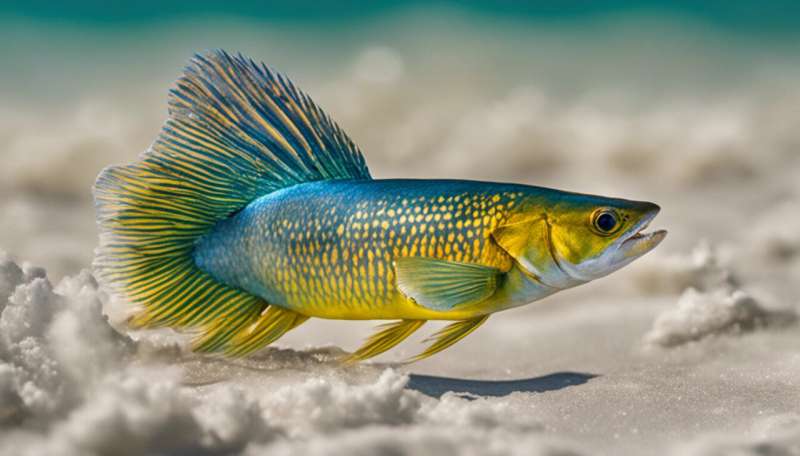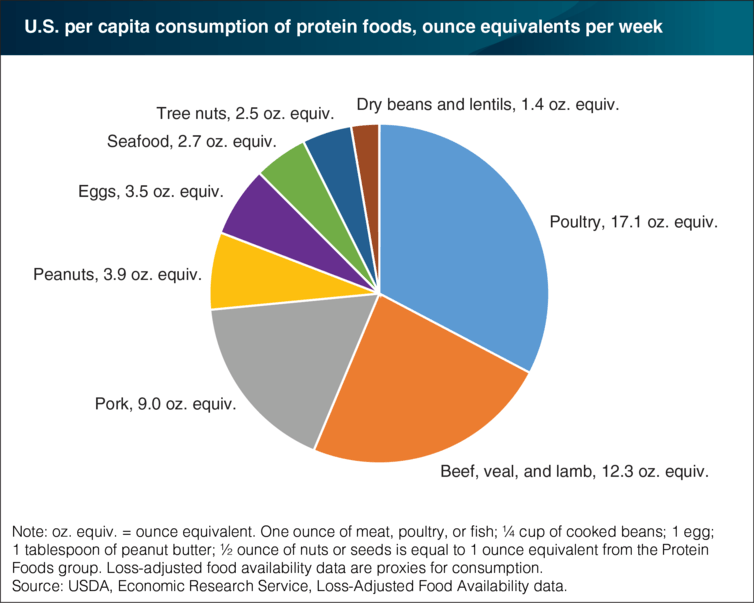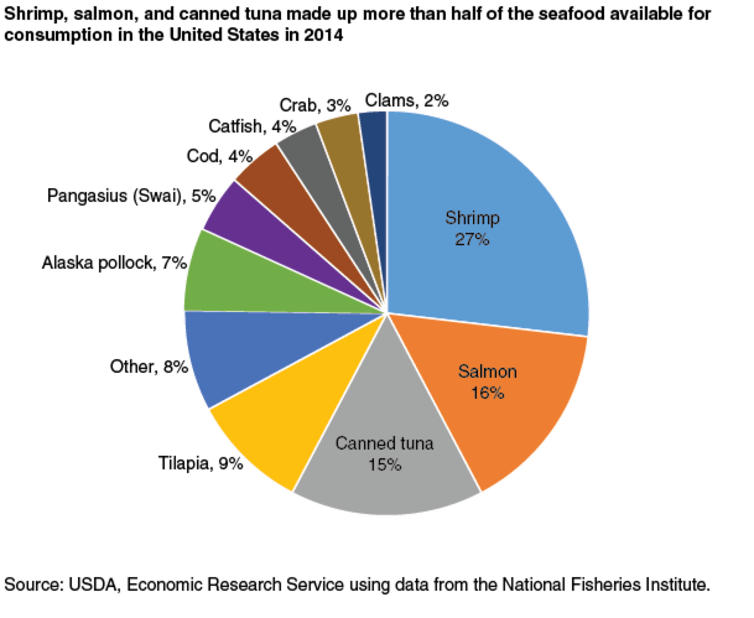Want to eat fish that's truly good for you? Here are some guidelines to reeling one in

Seafood is very healthy to eat – all things considered. Fish and shellfish are an important source of protein, vitamins and minerals, and they are low in saturated fat. But seafood's claim to fame is its omega-3 fatty acids, docosahexaenoic acid (DHA) and eicosapentaenoic acid (EPA), all of which are beneficial to health. The that adults eat two servings of seafood, or a total of eight ounces, per week.
Omega-3s are today's darling of the nutrition world, and such as high blood pressure, stroke, certain cancers, asthma, Type 2 diabetes and Alzheimer's disease. However, of omega-3s, especially when considering the lack of strong evidence from randomized clinical trials.
The strongest evidence exists for a cardiovascular health benefit, and from consuming seafood (not just fish oil), which is significant because heart disease is the in the U.S.
One of the things I research is Americans' meat and protein consumption. Though many of us are concerned about getting enough protein, most in their diets. Rather, the problem is that most of us don't include enough . We eat a lot of poultry and red meat but not as much seafood, nuts, beans, peas, and seeds. For seafood in particular, consumption is estimated to be closer to , well below the recommended eight ounces.
So the solution might seem simple: Increase public health messaging along the lines of: "Seafood is healthy. Eat more of it." But it's a bit more complicated than that.
Complication #1: Omega-3 fatty acids vary from fish to fish
Here's the catch: If you are dutifully eating your two servings a week, but it's from tilapia, shrimp, scallops or catfish, you won't actually be getting much of the health benefits from the omega-3 fatty acids.
That's because , and many commonly consumed seafoods are not actually that high in omega-3s.
The top five seafood products consumed in the U.S. are shrimp, salmon, canned tuna, tilapia and Alaskan pollock (think fishsticks). Together, these seafood products total about .
Let's take a look at the omega-3s content of these top seafood choices. Salmon is a good choice here, even though the total of omega-3s (the species and whether it is farmed or wild-caught). Regardless of the type, salmon is still one of the best omega-3 sources.
Canned tuna is an okay source, but it's a bit of mixed bag (white tuna has more omega-3s than light tuna).
Meanwhile, the other top seafood products – shrimp, tilapia and Alaskan pollock – are all .

In short, we're not eating a lot of fish to begin with, and much of the fish we do eat is not actually that high in omega-3 fatty acids.
Complication #2: Mercury
A naturally occurring heavy metal in rock, mercury is primarily through human processes, such as the burning of fossil fuels.
Mercury makes its way into our waterways and in the marine food chain. Generally speaking, small fish and shellfish are low in mercury, while the most mercury accumulates in big, long-lived, predator fish, such as king mackerel, marlin, orange roughy, shark, swordfish, ahi (or yellowfin) tuna and bigeye tuna.
Humans, of course, are also part of that food chain. When we eat those big, long-lived predator fish, we ingest the mercury that's accumulated in them.
. A little bit here and there is probably not going to harm the average adult, but with high exposure, mercury can damage key organs. Fetuses, infants and young children are vulnerable to mercury toxicity, as high exposure can cause serious, irreversible developmental and neurological damage.
To minimize mercury exposure in women and young children, the Environmental Protection Agency (EPA) and Federal Drug Administration (FDA) on Jan. 18, 2017. There are three categories – Best Choices, Good Choices and Choices to Avoid, and while most types of seafood clearly fall in just one category, some classifications are species-specific.
Tuna shows up in all three categories: canned light tuna is a Best Choice, canned white tuna is a Good Choice, but watch out for Bigeye tuna - it's a Choice to Avoid.
For optimizing the health benefits, the best seafood choices are those high in omega-3s and low in mercury. lists several seafood options that , including salmon, trout, oysters, herring and sardines, and Atlantic and Pacific mackerel.
Complication #3: Sustainability
There is also the issue of sustainability.
Let's again take the . For certain species, the method of harvest and the location of harvest matter a great deal. Here's an example from the Monterey Bay Aquarium's guide: If you purchase a can of light tuna that's trawl-caught in the East Pacific – that's a Best Choice.

But if that canned light tuna is caught with a deep-set long line in the Hawaii Western Central Pacific, now it's a Good Alternative. And canned light tuna caught on a in the Indian Ocean? Now we're squarely in the Avoid category.
By now you are probably asking if there are any win-win-win fish. Yes! Alaskan salmon is a popular one, but Alaskan salmon is sold at a premium price. Most of the in the U.S. is farmed Atlantic salmon, which typically has a poor sustainability rating.
Pacific sardines, farmed mussels, farmed rainbow trout and Atlantic mackerel (not trawled) are some other "win-win-win" options.
How can I make an informed decision?
Making informed choices about seafood isn't easy, and it is complicated by . But there are some resources to help.
Eco-certification labels can help you make a decision without doing all the research yourself. Not all eco-labels are created equal, though, so a good place to scope out what to look for is the website. There, you can find a list of eco-certification labels for specific seafood products that, at a minimum, meet yellow "Good Alternative" recommendations.
There are also a number of consumer seafood guides, and with a little upfront research, these can help you make purchasing decisions when you get to the grocery store or restaurant. Many guides use a to clearly designate choices with a green, yellow or red light signs.
Additionally, the new , a governmental program that goes into effect this year, will . But you should still always be vigilant for prices that seem too good to be true.
If your only concern is reducing mercury content, the EPA and FDA guide " should suffice. For sustainability concerns, the Monterey Bay Aquarium's guide allows you to search for options using a traffic light system, or you can look for information by the type of seafood. If you're looking for a fish that meets all three criteria, the Environmental Working Group's and the Environmental Defense Fund's both provide comprehensive information.
When making food choices, sometimes we're fortunate and the health and sustainability goals line up. Eating less red and processed meat, for example, is a choice that's and . Unfortunately, with many seafood choices, these three important considerations – omega-3s, mercury and sustainability – sometimes, but don't often, align as we might like them to.
Provided by The Conversation
This article was originally published on . Read the .![]()
















